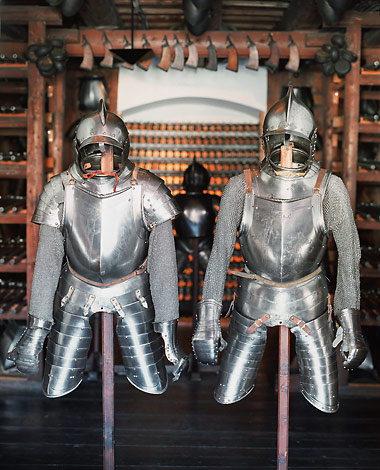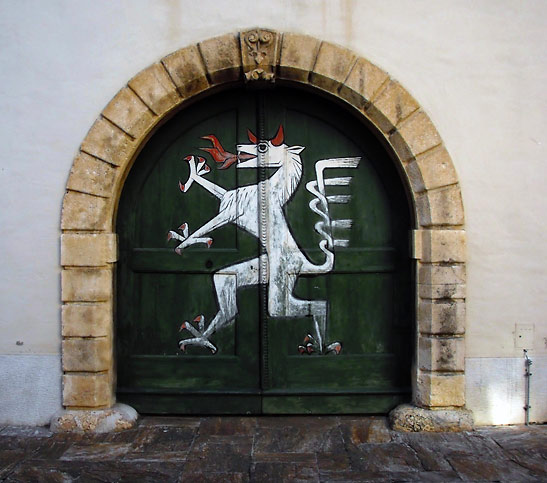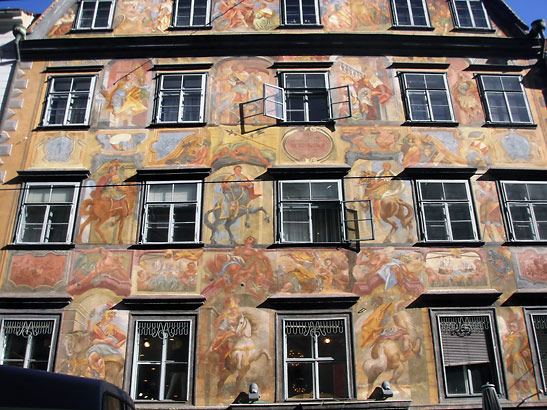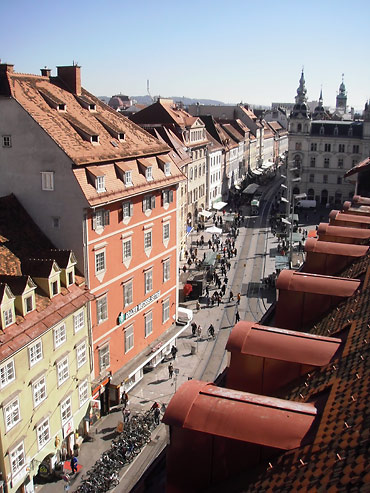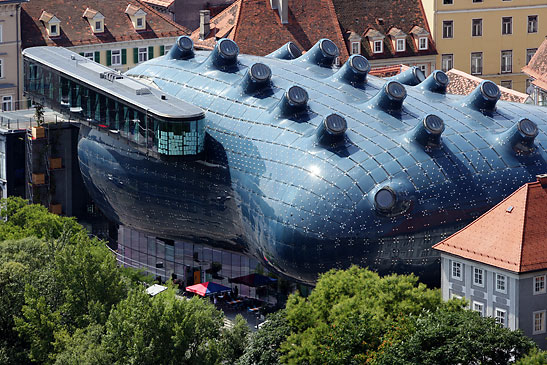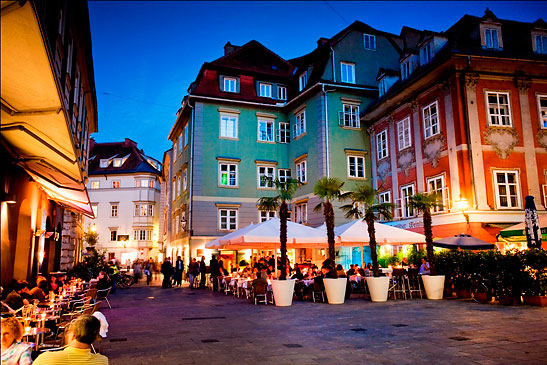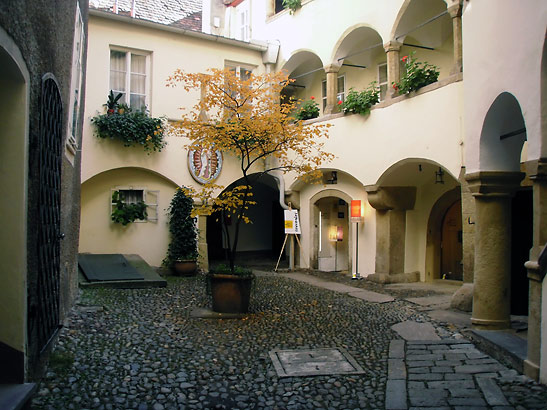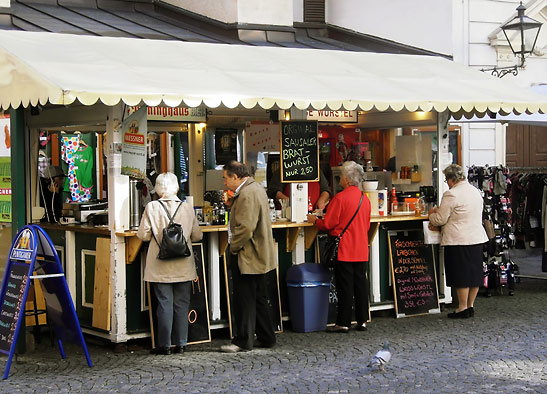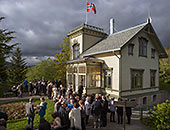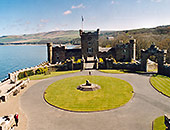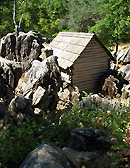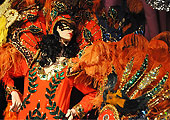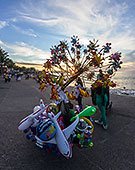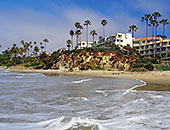 |
 |
|
 |

|
A
Tear Through Graz: Jousting Between Old and New
Story and photos by Gary Singh (except where noted)
Among them, a 10-foot wooden lance hangs above me. What a place: Torso breastplates and jousting paraphernalia sorted out uniformly on wooden racks, almost like produce in a supermarket. The ancient helmets came fitted with sliding visors so a soldier could give a military salute to the general. Most everything is made of Styrian iron. Bullet dents highlight some of the breastplates, but not from battle. They were test shots fired to make sure the armor worked. The Ottoman invasion was 1480, I'm told. For the next 200 years, money was then invested in defense, in the form of town walls and fortresses to fight off the Ottomans and the Magyars. I'm on a tear through Graz, in the world's largest historical armoury. Oak flooring and stone walls contain all the stories. Outside, the Styrian Panther, the insignia of Graz, appears wherever I roam – in courtyards, parliamentary halls, on the façades of cafés and bridges. The color green represents the surrounding forests.
Contrary to other parts of Austria, Graz exudes a Mediterranean vibe. The weather comes from the Adriatic. Inner courtyards appear everywhere, reminding me of Italy, only a few hours away by car. Roofing made from red beavertail tile blankets the top of the city, also recalling Italy. From the main square, I see a mix of Baroque, Renaissance, Gothic and Stucco. Much Italian influence, I observe, with a progression of different eras of stucco. From here, one can see exactly how stucco developed over the years. On one building, the gods of Greco-Roman mythology seem to look right at me.
I am in contrast. A few examples: Green spaces and green ideas comprise fifty percent of the city. A Franciscan monastery features solar panels all over its roof, just to cite one example. New supplements old, rather than replacing old. Hotel Wiesler, where Arnold Schwarzenegger usually stays, features two murals riffing on the Birth of Venus, two different takes on the Botticelli classic. One exists to the far left of the entrance, while the other adorns the far right wall, both serving as backdrops for different function areas. In the lobby, old disco LPs are for sale, intentionally part of the decor, oddly enough. New supplements old. As I continue, I think: Eighty zillion cities from Berlin to Bakersfield claim to be "where old meets new," but somehow in Graz it actually works. For the Graz Art Museum, British architects Peter Cook and Colin Fournier fabricated a deep blue creature, not unlike an H.P. Lovecraft monster, and stretched it out along the right bank of the River Mur, right smack between low suburban houses. Urban jousts against suburban, but in complete harmony.
I'm on a roll and it's easy to eavesdrop on a warm sunny afternoon. Residents bask in the weather as if they haven't seen the sun in twenty years. Everyone is outdoors. No one seems to be working. The dialect of German here sounds like it's being spoken with an Italian accent, exhibiting the rhythms and cadences of a Romance language. I discover more as I roam: Fifty thousand students across four universities comprise a significant portion of the populace. The Universalmuseum Joanneum, 200 years old, is an arts/university complex that somehow includes every building in one entire neighborhood: the main library, museums, galleries, convention space and outdoor courtyards--sort of like a miniature version of the Museums Quartier in Vienna. Graz is both a UNESCO World Heritage Site and a UNESCO City of Design, making it a member of the Creative Cities Network. And 12.5% of the entire workforce can be attributed to the creative industry. So if I eavesdrop in a cafe and write down what everyone says, they probably won't mind.
It's easy to navigate the streets here. Sporgasse, originally an eleventh-century trade route, corrals me through the Altstadt. I can still see copper gargoyles on top of the buildings, originally functioning as pre-gutter-era technology for rainwater dispersal. Nowadays the buildings have gutters but the gargoyles remain. Again, a harmonious joust between urban and suburban. Old and new. I relish in the contrast. Later, even more inner courtyards await. In older centuries, the cheapest way to fabricate cobblestone streets was to use stones from the River Mur. So they're called Mur Dumplings or "Murnockerl."
The cafés are still hopping as I head back to grab the final Vienna-bound train. Students, artists, businessmen, priests and fashion slaves all continue to mill about. At the end of my quick tear through Graz, I stop and order a sausage from a street vendor. The jousting is over.
Related Articles: |
|
Your tea adventures are especially interesting because I've always associated tea with British etiquette or a bevy of women wearing dainty victorian costumes and sipping tea with their little pinky sticking out. To see Tea from a man's perspective brings new light in a man's psyche. I've been among the many silent admirers of your writings for a long time here at Traveling Boy. Thanks for your very interesting perspectives about your travels. Keep it up! --- Rodger, B. of Whittier, CA, USA
|
|
| ||||
|
| ||||
|
| ||||
|
| ||||
This site is designed and maintained by WYNK Marketing. Send all technical issues to: support@wynkmarketing.com

|







